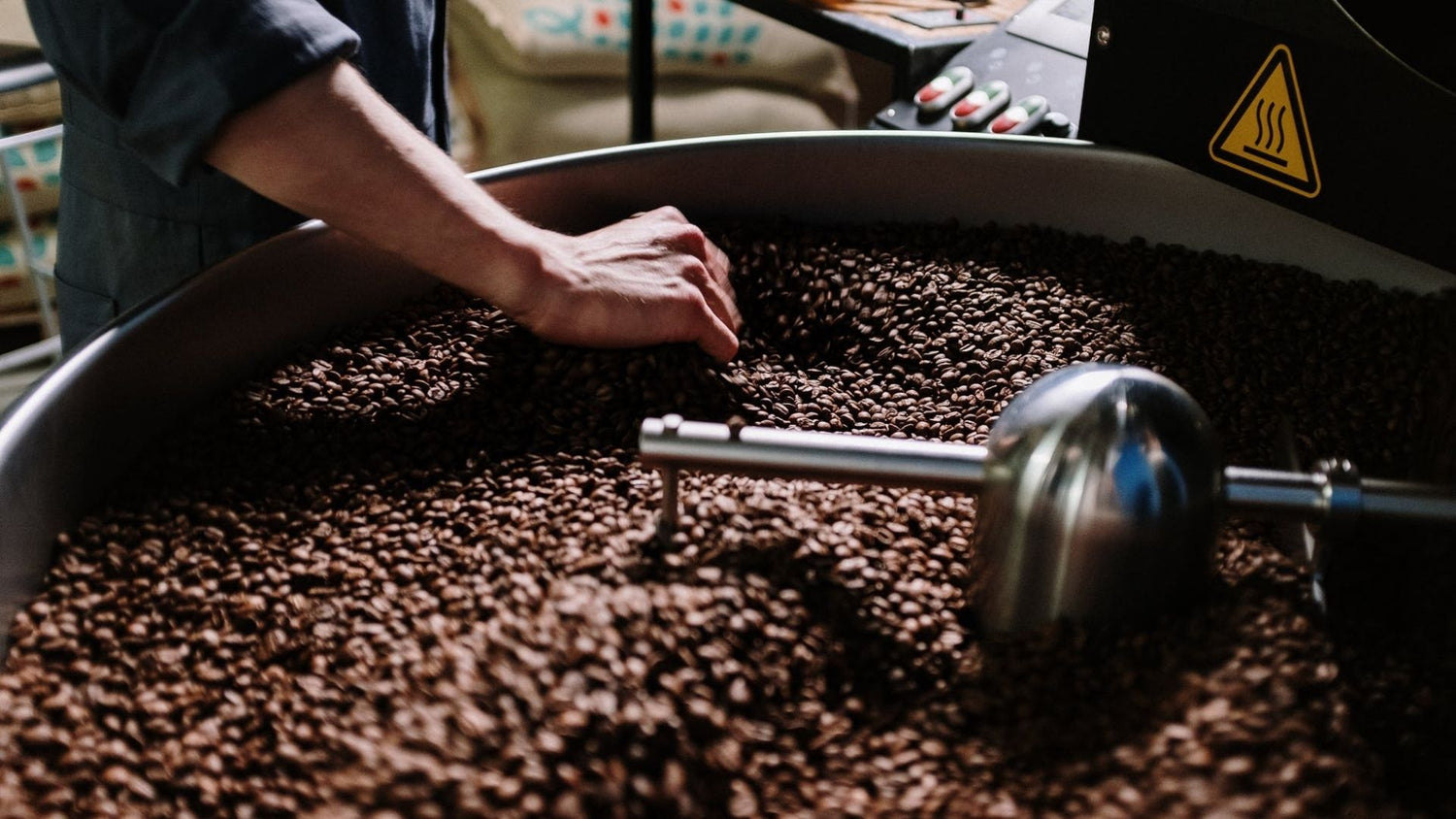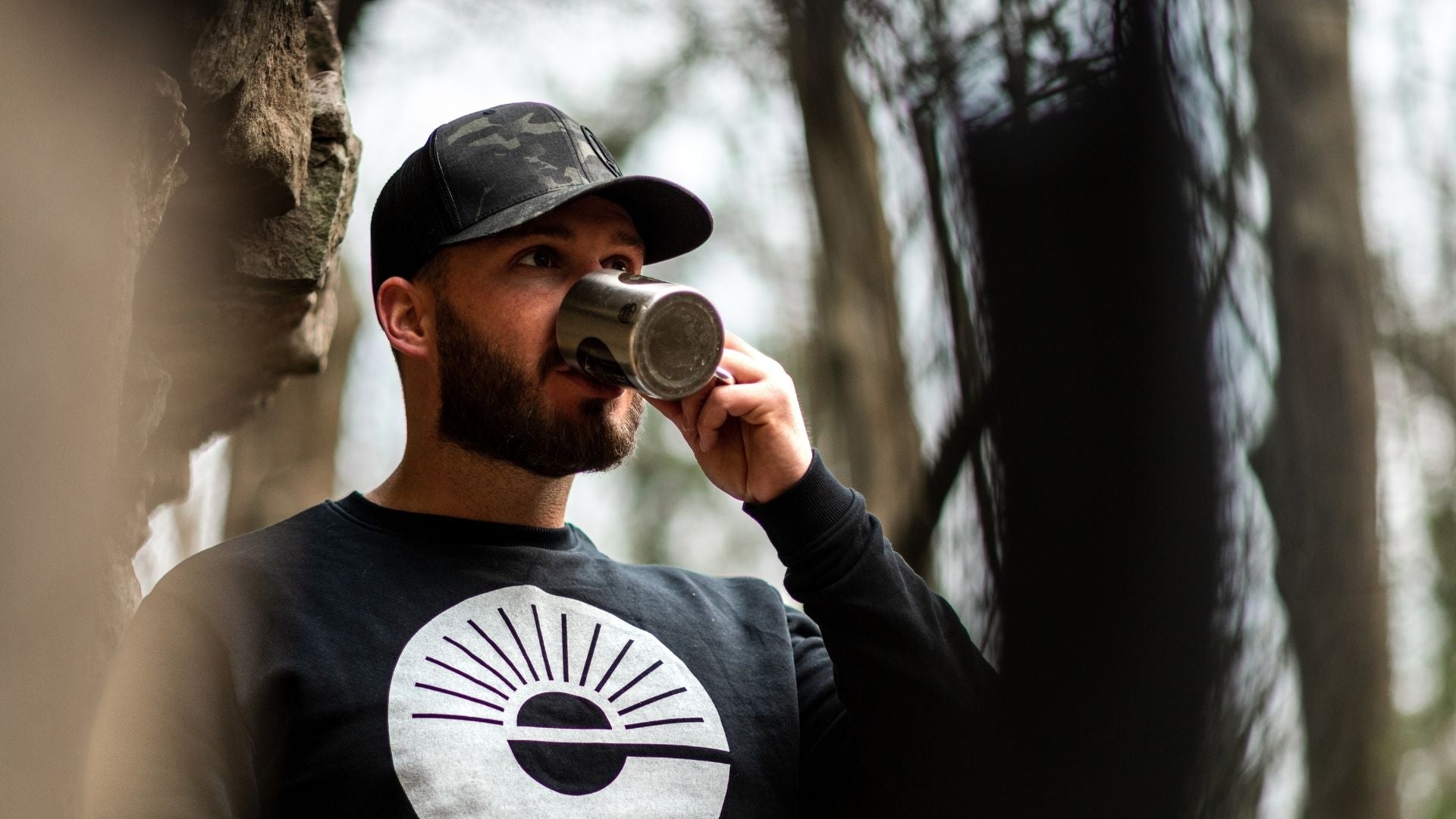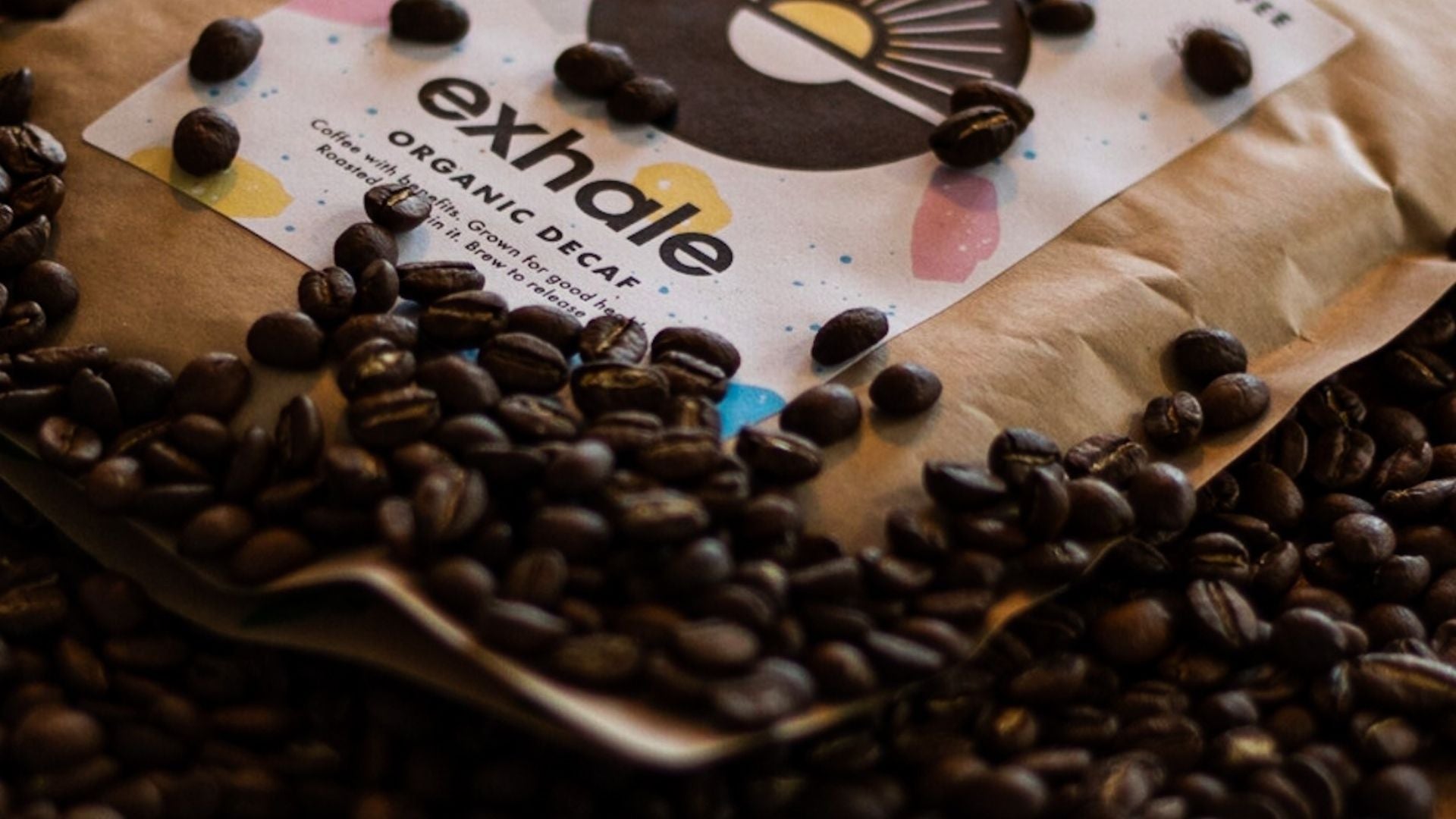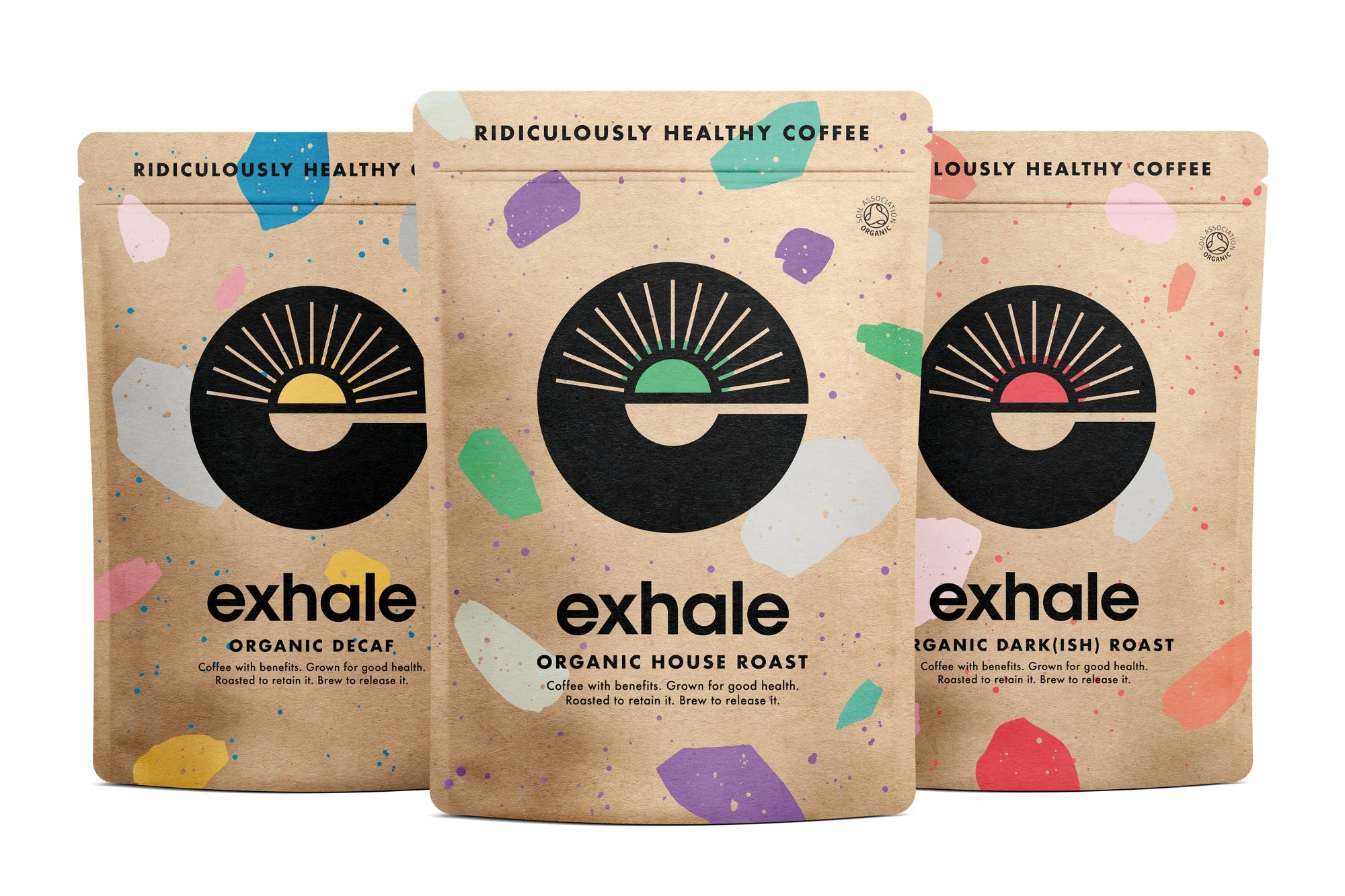Light vs dark roasts—or is there a happy medium? (Spoiler: yes.)
It’s time to take a deep, deep dive—into dark, dark roasts. We reveal the ugly truth behind the oily exterior of the most-commonly roasted coffee bean.
Ok. Before we get started. Let’s be straight up.
We are not on board with dark roast coffee.
There. We said it.
“Woah. Now hold on a second,” you may be thinking, indignantly. Thinking of those lovely dark roasted, oily coffee beans spanning the walls of pretty much every coffee shop chain you’ve ever set foot in, and pretty much every coffee packet you’ve ever seen in the supermarket.
Well, we have our reasons.
Remember when we all ate microwave meals? Remember when the Macarena was cool? Remember when everyone smoked? Ok, we’re getting carried away. But, if you’ve always been #darkroastforlife then we bet we can change your mind.
Read on, friend.

Light vs dark roast coffees
Dark roasted coffee has been the norm for far too long. And, to be honest, it’s been doing coffee a disservice. Ruining its reputation as a healthy, delicious thing.
Here’s why:
Why would anyone choose a dark roast?
Well, a lot of it is to do with consistency. Large coffee chains need to know that if someone was to go in any branch around the world, from London to the Philippines, that the coffee is going to taste exactly the same.
But the issue is that no two coffees are the same. Coffee beans are made up of over 1000 different compounds—and it’s this unique combination of flavonoids which contribute to the flavour of coffee. So, no two coffees can ever really taste the same.
For big coffee chains to get the taste consistency they’re after, they dark roast the coffee to the point where you’re not actually tasting the coffee anymore. All you’re tasting are the flavours imparted by the roasting process. So, what people traditionally think of as the taste of coffee is really just the taste of the dark roast.
The other thing is that cheap coffee tends to taste really bitter and nasty, and many huge companies tend to use the cheapest coffee available, which is produced using Robusta beans (which do taste really bitter and nasty, we’ve tried them). Then they use the dark roasting process to try and mask the flavour.
As a result, dark roasted coffees taste a lot more bitter, which is why people started to add sugar and milk to coffee, and it’s all a bit of a slippery slope from there.

The dark cycle
Here’s what happens. It’s a sad, sad truth.
- A coffee bean starts its life as the seed of the deliciously sweet and healthy coffee fruit,
- The coffee bean (seed) is removed from the fruit and then gets over-roasted, which removes any deliciousness or healthy goodness
- It now tastes bitter,
- People then add milk, cream, flavourings or sugar so it tastes good,
- Or, more recently people have started adding trendy things like medicinal mushrooms to try and make it healthy again,
- But... coffee was yummy and healthy to begin with.
- **shakes fists at the sky**
Coffee in its natural state is really healthy and really delicious—it just needs to be treated with care. From the way it’s farmed on the plantation, through the roasting process, all the way to the cup.
How does dark roasting make coffee less healthy?
Chlorogenic acid
Chlorogenic acid is the MVP of coffee, the polyphenol compound in coffee most-cited as giving coffee its health benefits and antioxidant powers. It's the most studied compound in coffee, and one we’ve talked about a lot.
In the green beans is when polyphenol content is in its highest concentration. Then as you roast it, it slowly drops. As you get from medium into a dark roast, the concentration falls off a cliff to between 6-10% of the original concentration of chlorogenic acid. (1)
Seriously. It’s that extreme.
As part of the exhale process, we roasted coffee in lots of different ways, looked at lots of different roast profiles and plotted them all on a graph, and plotted where this drop off point was. Through that research, we’re able to make sure that we roast just shy of the drop off point.
The “just shy” part is important, as you don’t want to roast too light as the delicious flavours, and some of the natural sweetness for example is brought out as you roast the beans. So, if you roast too light of a coffee, it’s not sweet enough, and people don’t really like it.
TLDR: The happy place is a medium roast, before the chlorogenic acid drop off point. The sweet spot of flavour and function.

Cafestol and kahweol
Cafestol and kahweol are two healthy compounds associated with the fatty acids and oils in coffee. As you get to a dark roasted coffee you start seeing a shine on the surface of the coffee beans, that’s the oils leaving the beans. And the oil is taking with it the cafestol and the kahweol from the coffee.
With dark roasted coffee, a lot of the natural oils inside has left the beans, taking with it the cafestol and kahweol and their anti-inflammatory, hepatoprotective, anti-cancer, and anti-diabetic potential–so you need to stop roasting the coffee before you get to this point. (2)
TLDR: If you see a coffee with a shiny surface, avoid it.
Melanoidin
Melanoidins are produced as part of the Maillard reaction (the chemical reaction that gives browned food its distinctive flavour—in this case, the roasting process). So, where cafestol and kahweol are the same as chlorogenic acid—in that they are at their highest concentration in the green beans and drop off as the beans are roasted—melanoidins are created in the roasting process and peak around a medium roast.
As you get to a dark roast they start to get deactivated and you lose their potency as well as all their health benefits. For a start they have antioxidant, anti-inflammatory, and antimicrobial properties. (3)
TLDR: A bit of a roast is a good thing. Medium’s the way to go for lovely healthy melanoidins.
So, there you have it. We could go on to discuss the nasty compounds that over-roasting introduces into the coffee... but we’ll leave that for another day. In conclusion, you’ve just got to ditch the dark roasts. Not only are they doing a disservice to delicious, healthy coffee, they also represent a problem that’s common across the whole food industry—that of overprocessing and ruining perfectly good food.
References:
- https://exhalecoffee.com/pages/the-science
- Ren Y, Wang C, Xu J, Wang S. Cafestol and Kahweol: A Review on Their Bioactivities and Pharmacological Properties. Int J Mol Sci. 2019 Aug 30;20(17):4238. doi: 10.3390/ijms20174238. PMID: 31480213; PMCID: PMC6747192.
- Moreira AS, Nunes FM, Domingues MR, Coimbra MA. Coffee melanoidins: structures, mechanisms of formation and potential health impacts. Food Funct. 2012 Sep;3(9):903-15. doi: 10.1039/c2fo30048f. Epub 2012 May 15. PMID: 22584883.





Leave a comment
All comments are moderated before being published.
This site is protected by hCaptcha and the hCaptcha Privacy Policy and Terms of Service apply.